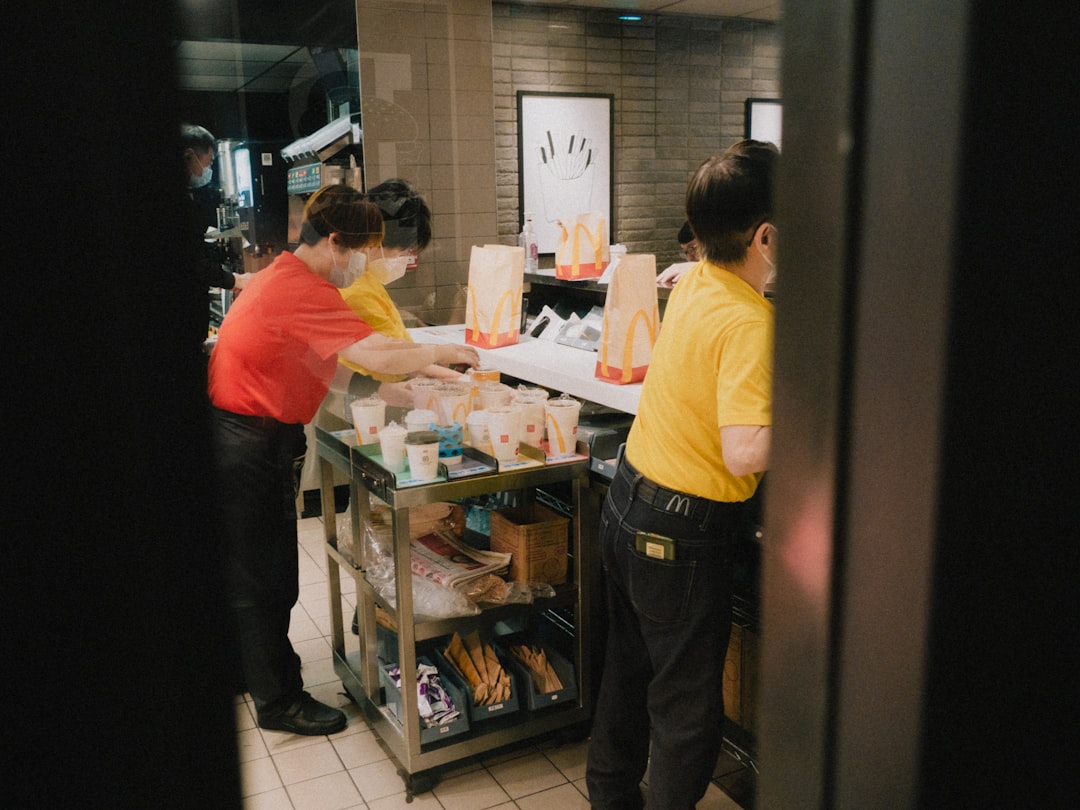Restaurant work is inherently stressful. In fact, the industry scored an alarming 98 out of 100 on a burnout scale, with stress and long hours cited as primary factors. As a restaurant owner or manager, understanding these stressors is the first step toward creating a healthier workplace environment.
The restaurant industry faces multiple interconnected stressors that contribute to burnout:
Restaurant workers often endure physically demanding shifts without adequate breaks, leading to exhaustion and burnout. The secret struggles of working in the restaurant business include long, late shifts that result in both physical and mental fatigue.
Picture a typical Friday night service: servers racing between tables, line cooks juggling multiple tickets, and managers fielding customer concerns while monitoring wait times—all for 8-12 hours straight, often without a chance to sit down or take a proper meal break. This sustained high-intensity work takes a tremendous physical and mental toll.

With average turnover rates reaching 75%, restaurants frequently operate with inadequate staffing. This forces remaining employees to handle excessive workloads, creating a vicious cycle of stress and burnout.
When three servers call out sick during a busy weekend and you're already shorthanded, the remaining staff feels the crushing weight of covering extra sections. This constant "doing more with less" mentality leads to exhaustion, resentment, and eventually, more turnover—perpetuating the cycle.
Demanding patrons, combined with low tipping norms, create significant psychological pressure. According to industry research, 37% of workers report feeling stressed, 34% overworked, and 32% exhausted when dealing with customer demands.
A server might expertly navigate a table of 12 during peak hours, only to receive a minimal tip and negative review because the kitchen was backed up. These interactions, where workers must maintain composure while facing sometimes unreasonable demands, create a unique form of emotional labor rarely seen in other industries.
Low wages and inconsistent income (particularly for tip-dependent positions) contribute substantially to employee stress. This financial pressure can be especially challenging for restaurant owners struggling to pay staff while maintaining profitability.
Many restaurant workers live paycheck to paycheck, with their income fluctuating based on factors beyond their control—weather, seasonality, shift assignments, and table sections. This uncertainty makes financial planning nearly impossible and creates constant background anxiety.
The pandemic dramatically increased exposure to occupational hazards. These changes in the food industry continue to affect worker well-being, with 72% of employees reporting experiencing discrimination at least a few times annually.
Beyond physical risks like cuts, burns, and repetitive strain injuries, restaurant workers now contend with increased health concerns around customer interactions, enhanced sanitation protocols, and often becoming the enforcers of public health policies—adding another layer of stress to an already demanding job.
Unaddressed stress doesn't just hurt your staff—it damages your business:
Consider offering health insurance with mental health benefits or partnering with wellness programs. Mental stress claims surged in 2021, with 17% of restaurant workers diagnosed with substance abuse disorders, according to the Mahoney Group.
Some restaurants have found success with:
Address shortages through better hiring practices and workload redistribution. Technology can help streamline operations and reduce administrative burdens on your team.
Consider implementing "float" positions during peak hours, cross-training staff across multiple stations, and developing clear escalation protocols for when the restaurant becomes unexpectedly busy. Creating a reliable on-call system with fair compensation can also help manage unpredictable staffing needs without overwhelming regular staff.
Reduce burnout by allowing predictable hours and adequate rest periods. When planning restaurant menu changes, consider how they impact staff workload and training requirements.
Providing schedules at least two weeks in advance allows employees to plan their lives, reducing anxiety. Some innovative restaurants have moved to four-day workweeks or implemented "split shift differentials" that compensate workers at a higher rate for working challenging hours—recognizing the sacrifice these schedules require.
Invest in management training to foster a supportive culture. Regular check-ins with staff can identify stress points before they become crises.
Effective pre-shift meetings can set the tone for the day, addressing potential challenges and celebrating recent wins. Creating anonymous feedback channels allows staff to voice concerns without fear of retaliation. When managers model calm, solution-oriented behavior during busy periods, it ripples throughout the entire staff.
Modern restaurant management platforms can significantly reduce operational stress by:
Documented procedures reduce confusion and help staff handle busy periods more effectively. This is especially important when implementing changes in the food industry like new delivery options or contactless dining.
Consider the difference between these two scenarios:
The second scenario creates significantly less stress for everyone involved. Investing in comprehensive training manuals, checklists for opening and closing procedures, and clear protocols for handling common issues pays dividends in reduced workplace stress.
Simple recognition goes a long way. Implement regular appreciation practices to boost morale and create a positive work environment.
Recognition doesn't have to be elaborate or expensive. Something as simple as highlighting a staff member's exceptional handling of a difficult situation during a pre-shift meeting can make them feel valued. Consider implementing peer recognition programs, where team members can nominate colleagues for going above and beyond.
Team-building activities and a collaborative atmosphere help staff support each other during stressful periods. This social support system is crucial for mental wellbeing.

Family-style staff meals before shifts not only ensure your team is well-fed but create opportunities for bonding. Organizing occasional outings or activities outside work hours—from bowling nights to volunteer opportunities—helps build relationships that translate to better teamwork during busy services.
Model healthy stress management and work-life balance. Your behavior sets the tone for the entire restaurant.
If you're constantly frazzled, working 80-hour weeks, and sending emails at 2 AM, your staff will internalize that this is the expected standard. Instead, demonstrate effective prioritization, take breaks when needed, and maintain boundaries between work and personal life. When the leadership team handles pressure with grace, it creates a more resilient culture throughout the organization.
The high-stress nature of restaurant work isn't inevitable. With thoughtful management approaches and the right technological support, you can create an environment where your team thrives rather than merely survives.
By addressing the root causes of stress in your restaurant, you'll not only improve staff wellbeing but also enhance customer experience, reduce turnover costs, and ultimately increase profitability. The investment in stress reduction pays dividends across every aspect of your business.
Take the first step today by assessing your current operations and identifying where simple changes could make the biggest impact on your team's stress levels.
